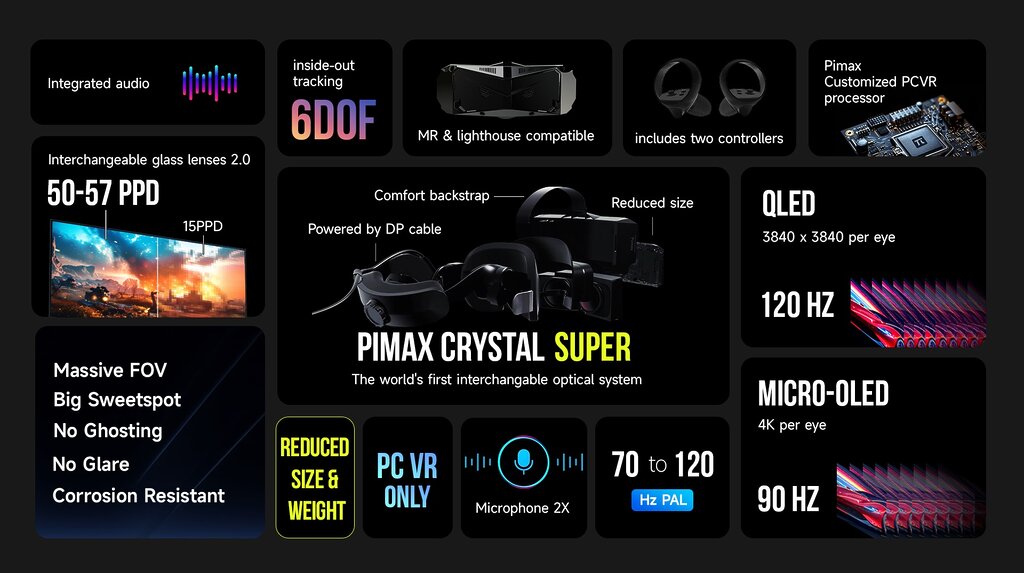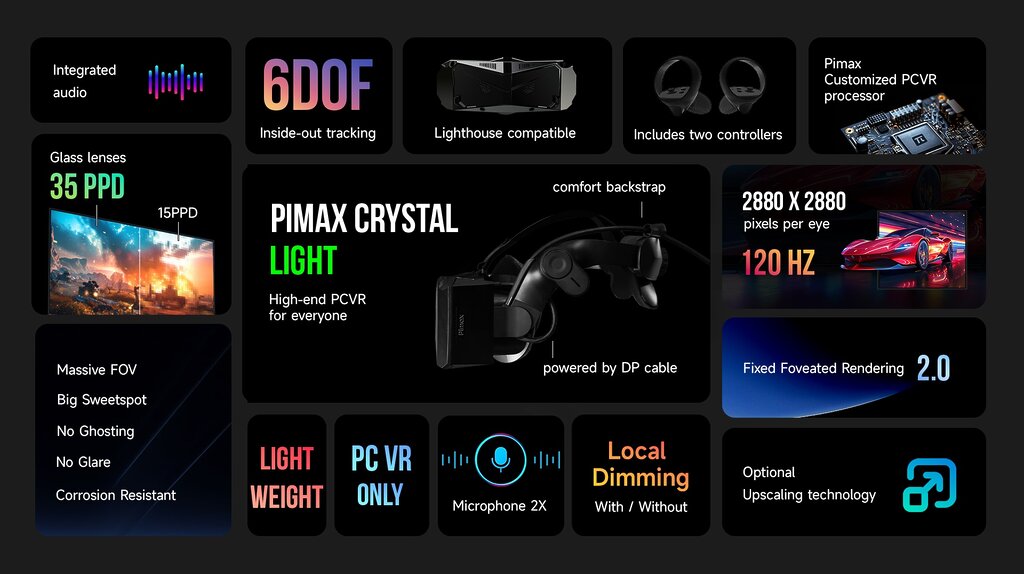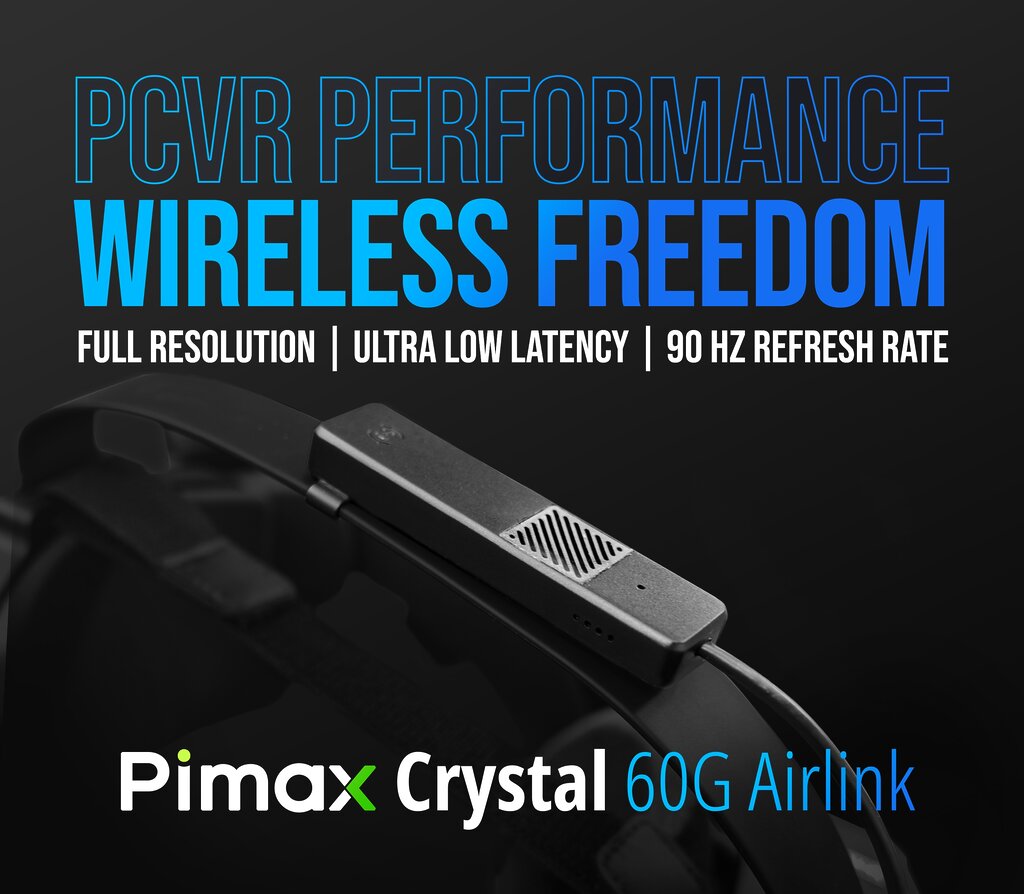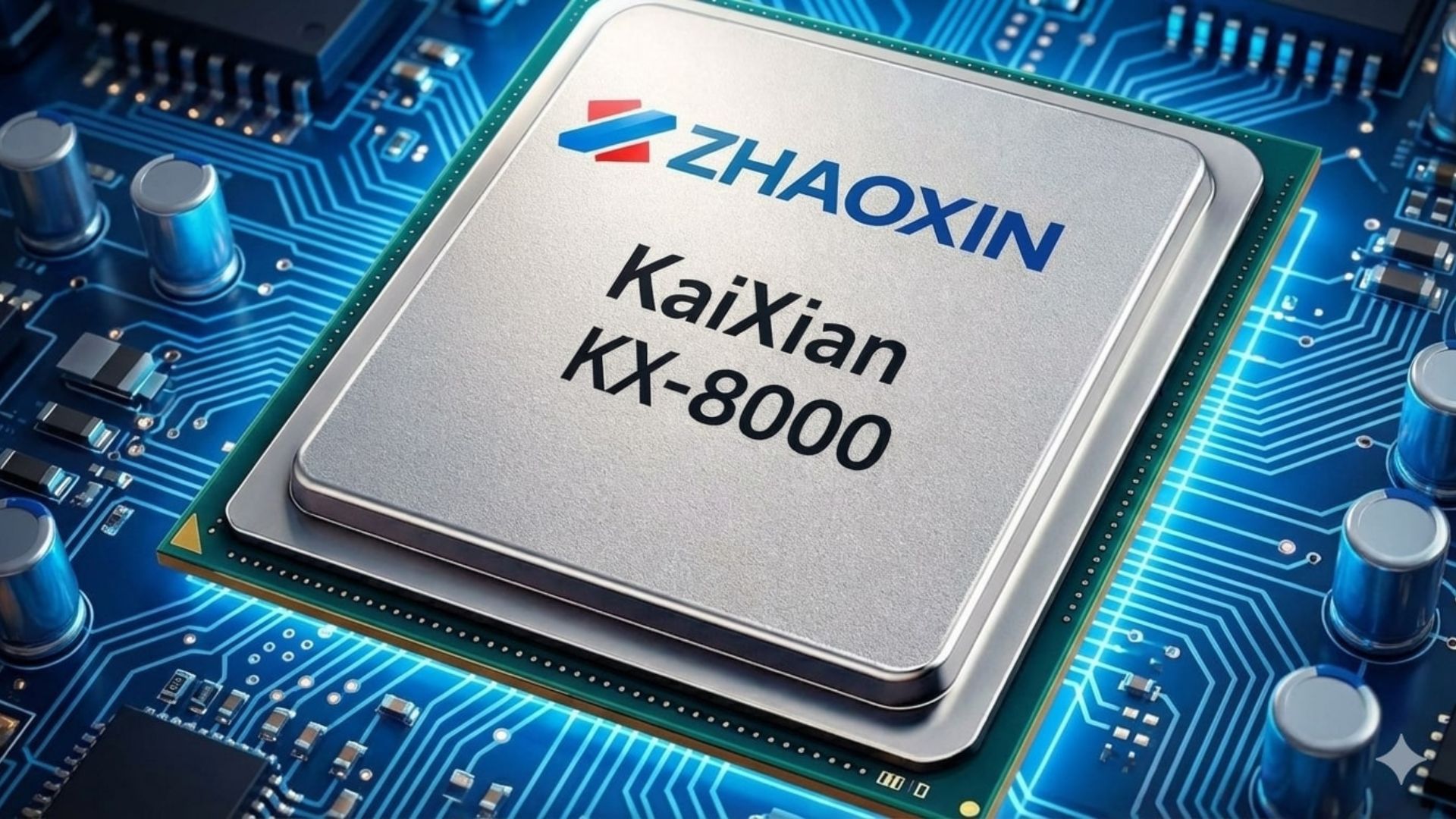[Press Release] Pimax just debuted the Crystal Super and Crystal Light VR headsets. The former boasts 29.5 million pixels and a swappable QLED/micro-OLED panel, while the latter provides 16.6 million pixels at the cheap price of $699.

Pimax Crystal Super
The Crystal Super is marketed as the most immersive VR headset, thanks to 29.5 million pixels and a wider FOV. It also provides flexibility between a QLED and micro-OLED panel as Pimax focuses on delivering a tailored experience for every customer.
The ability to replace displays comes from the world’s first replaceable optical engine system. Pimax enables its customers to change both the displays and lenses, offering maximum versatility.
The manufacturer includes glass aspheric lenses with the QLED engine. Meanwhile, the micro-OLED engine packs glass pancake lenses. It also boasts features like eye-tracking, dynamic foveated rendering, and integrated audio.
Other features include a 3840 x 3840 per-eye resolution and a 70-120Hz refresh rate. The latter varies based on the display choice, but all options include 200 nits of brightness and an integrated 3.5mm audio jack.
The Pimax Crystal Super debuts with these features in Q4 2024 and costs $1799.

Crystal Light
The Crystal Light is Pimax’s cheaper but capable offering. Costing less than half of the Crystal Super, this VR headset offers 2880 x 2880 resolution for each eye.
To cut down costs, Pimax has made compromises like the exclusion of standalone capabilities. These have led to major weight and cost reductions without sacrificing the comfort factor.
While the interchangeable lenses are excluded, Pimax boasts upgraded Fixed Foveated Rendering technology. All of this leads to a PCVR headset that costs $699, appealing to a much larger audience.
This headset is currently scheduled for a May 2024 launch.

Crystal Airlink
Pimax’s wireless Crystal headset also continues to co-exist in the lineup.
As a wireless headset, it needs the XR2 chip and an external battery. To ensure seamless wireless connectivity, it also requires the 60G Airlink, which consists of a dongle, a transmitter, and a receiver.
Pimax’s 60G Airlink is designed to be lightweight and offers extremely high bandwidth needed to facilitate minimizing visual compression and latency. The 60G Airlink comes with 2-3 hours of battery, a 90 Hz refresh rate, and a 2880 x 2880 resolution.
Pimax has confirmed a $299 price for the 60G Airlink, with a release scheduled for later in 2024.
Thank you! Please share your positive feedback. 🔋
How could we improve this post? Please Help us. 😔
[Senior News Reporter]
Avinash is currently pursuing a Business degree in Australia. For more than 5 years, he has been working as a gaming journalist, utilizing his writing skills and love for gaming to report on the latest updates in the industry. Avinash loves to play action games like Devil May Cry and has also been mentioned on highly regarded websites, such as IGN, GamesRadar, GameRant, Dualshockers, CBR, and Gamespot.




